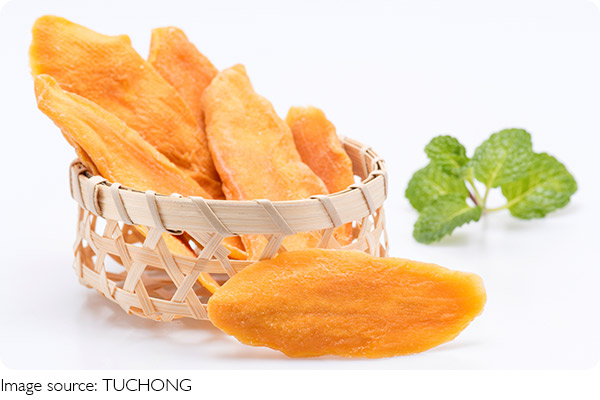Mango Ripeness Guide

There's nothing quite like the juicy sweetness of a perfectly ripe mango. But there's also nothing more disappointing than biting into one that's too hard or bland. That's why knowing how to spot a ripe mango makes all the difference.
We've all been there at the fruit stall, unsure which one to choose. Should we go by color? Smell it? Squeeze it? Let's break it down together and find out how to pick the mango that's just right.
1. Feel the firmness
The first and most reliable way to judge ripeness is by touch. A ripe mango should give slightly when we press it gently with our fingers—just like a ripe avocado or peach. If it feels rock-hard, it's not ready yet. If it feels too soft or mushy, it may be overripe.
We don't need to squeeze too hard—just a gentle press near the top or sides will tell us a lot.
2. Check the smell
Smell is another great sign. A ripe mango gives off a sweet, fruity aroma near the stem end. If we lift the mango close to our nose and it smells tropical and fragrant, that's a good sign.
If there's no scent, the mango may still need more time. On the other hand, if it smells sour or fermented, it may be past its prime.
3. Look at the color
Color can be helpful, but it depends on the variety. For example:
• Yellow mangoes (like Ataulfo or honey mangoes) should be mostly golden when ripe.
• Red-green mangoes may still have green patches even when ripe.
So instead of looking for a fully yellow or red mango, we should check for a warm tone and avoid very dark green ones if they also feel hard.
4. Watch for wrinkles
Some mangoes, especially the small yellow ones, develop gentle wrinkles on the skin when they're ripe. That's usually a sign that the fruit has softened and the sugars have developed. It might not look perfect on the outside, but the inside is often at its sweetest.
Just make sure the skin isn't shriveled or too dry—that could mean it's drying out.
5. Consider the weight
A ripe mango often feels heavier than it looks. That's because it's full of juice. If we pick up two mangoes of similar size, the heavier one is usually riper and more flavorful.
It's a small trick, but it really works when we're comparing fruits side by side.
What if the mango isn't ripe yet?
If we've brought home a mango that's still firm and not fragrant, don't worry—we can let it ripen at room temperature. Leave it on the counter for a few days, and check it daily. To speed things up, we can place it in a paper bag with a banana or apple. These fruits release natural gases that help mangoes ripen faster.
Once ripe, we can store mangoes in the fridge to keep them fresh for a few more days.

Let's enjoy the sweetness of mango season
Now that we know how to spot the signs of ripeness—feel, smell, color, wrinkles, and weight—we can walk into any market with confidence. Whether we're slicing mangoes into smoothies, salads, or just enjoying them fresh, choosing the right one makes all the difference.
Lykkers, have you picked the perfect mango lately? Or do you have a secret tip we didn't mention? Share it with us—we'd love to hear how you enjoy this golden fruit!

 · Food Team
· Food Team